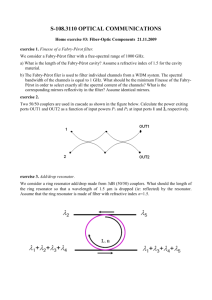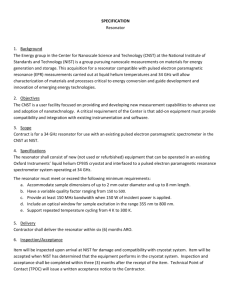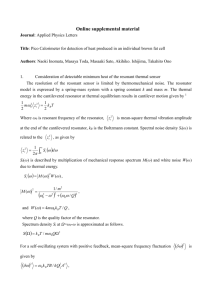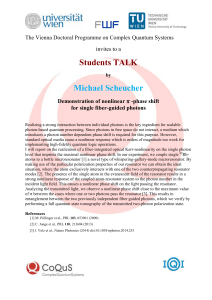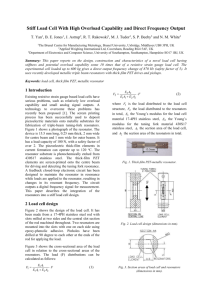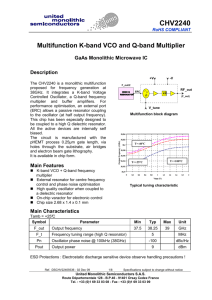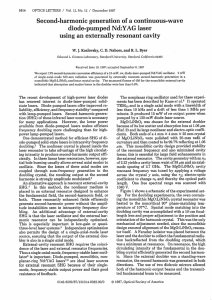5.2 series 125 crystal resonator
advertisement
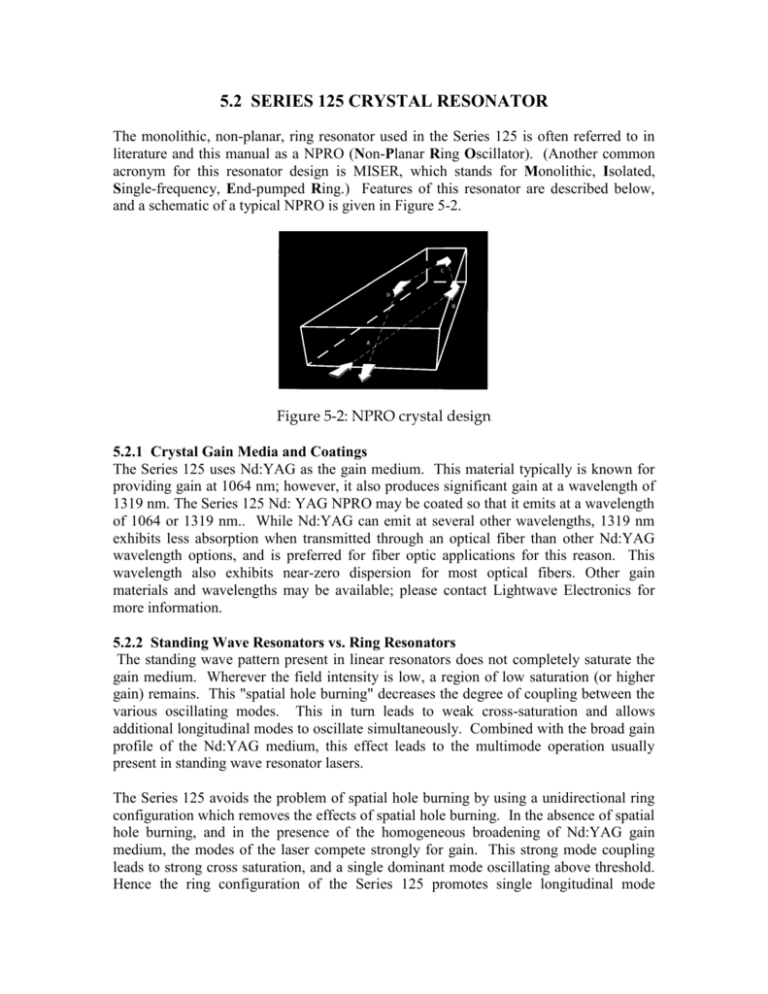
5.2 SERIES 125 CRYSTAL RESONATOR The monolithic, non-planar, ring resonator used in the Series 125 is often referred to in literature and this manual as a NPRO (Non-Planar Ring Oscillator). (Another common acronym for this resonator design is MISER, which stands for Monolithic, Isolated, Single-frequency, End-pumped Ring.) Features of this resonator are described below, and a schematic of a typical NPRO is given in Figure 5-2. Figure 5-2: NPRO crystal design 5.2.1 Crystal Gain Media and Coatings The Series 125 uses Nd:YAG as the gain medium. This material typically is known for providing gain at 1064 nm; however, it also produces significant gain at a wavelength of 1319 nm. The Series 125 Nd: YAG NPRO may be coated so that it emits at a wavelength of 1064 or 1319 nm.. While Nd:YAG can emit at several other wavelengths, 1319 nm exhibits less absorption when transmitted through an optical fiber than other Nd:YAG wavelength options, and is preferred for fiber optic applications for this reason. This wavelength also exhibits near-zero dispersion for most optical fibers. Other gain materials and wavelengths may be available; please contact Lightwave Electronics for more information. 5.2.2 Standing Wave Resonators vs. Ring Resonators The standing wave pattern present in linear resonators does not completely saturate the gain medium. Wherever the field intensity is low, a region of low saturation (or higher gain) remains. This "spatial hole burning" decreases the degree of coupling between the various oscillating modes. This in turn leads to weak cross-saturation and allows additional longitudinal modes to oscillate simultaneously. Combined with the broad gain profile of the Nd:YAG medium, this effect leads to the multimode operation usually present in standing wave resonator lasers. The Series 125 avoids the problem of spatial hole burning by using a unidirectional ring configuration which removes the effects of spatial hole burning. In the absence of spatial hole burning, and in the presence of the homogeneous broadening of Nd:YAG gain medium, the modes of the laser compete strongly for gain. This strong mode coupling leads to strong cross saturation, and a single dominant mode oscillating above threshold. Hence the ring configuration of the Series 125 promotes single longitudinal mode operation. The direction of oscillation is set by designing an optical diode into the optical resonator. In the case of the Series 125, this optical diode is obtained by applying a magnetic field to the crystal, and by using the polarization properties of the non-planar resonator configuration to increase the gain in one direction. This method provides the Series 125 with a single, unidirectional mode. 5.2.3 Monolithic Resonator Design The stability of the Series 125 is obtained through its monolithic design. The mirrors of the laser cavity are the polished surfaces of the crystal. High mirror reflectivity is achieved through the use of either total internal reflection or through the application of optically reflective coatings to the surface of the crystal. The Series 125 achieves an even greater degree of stability since the pump source of the laser is a diode laser with stable output power. The monolithic design, a stable diode laser pump, and non-planar geometry, coupled with the magnetic field applied on the crystal, provides the Series 125 with true unidirectional operation. The non-planar beam path within the crystal allows for a very compact design since only a few components are required.
